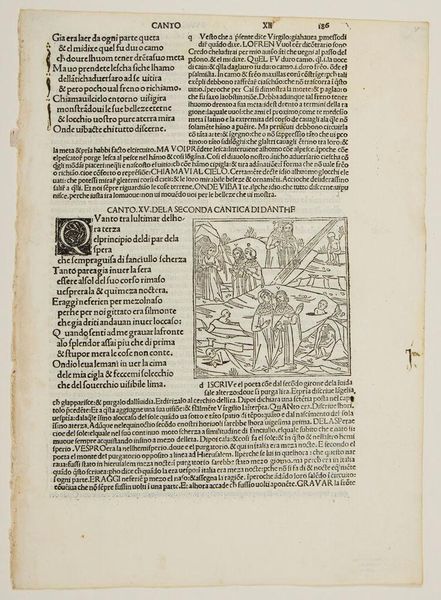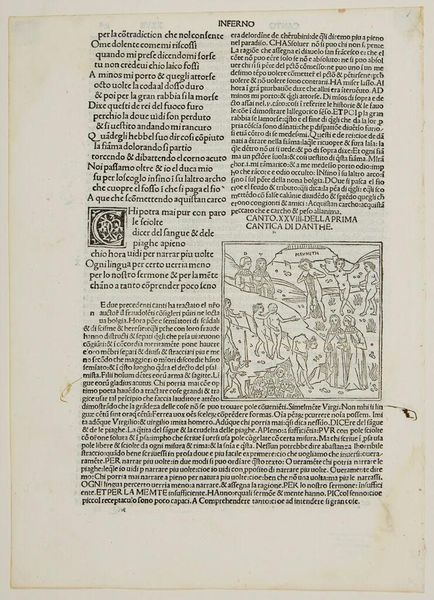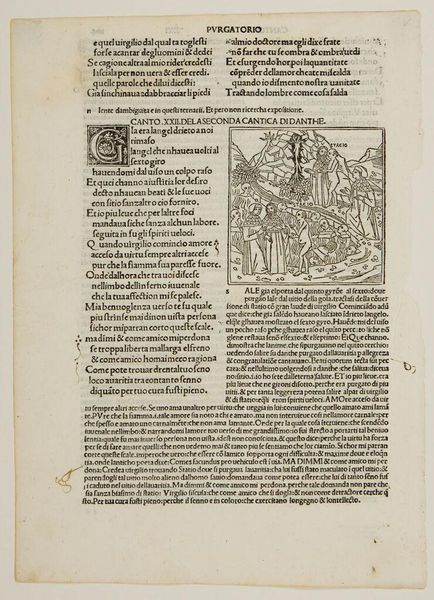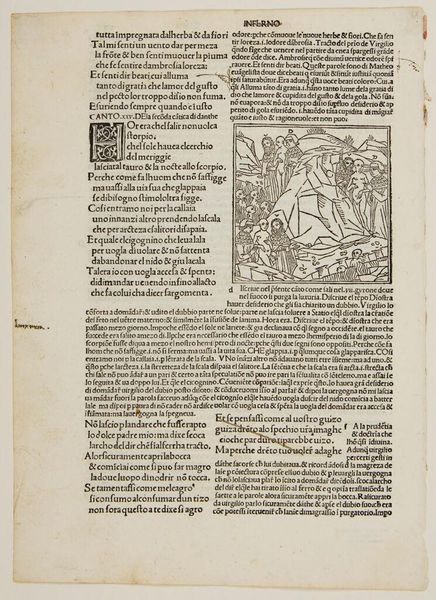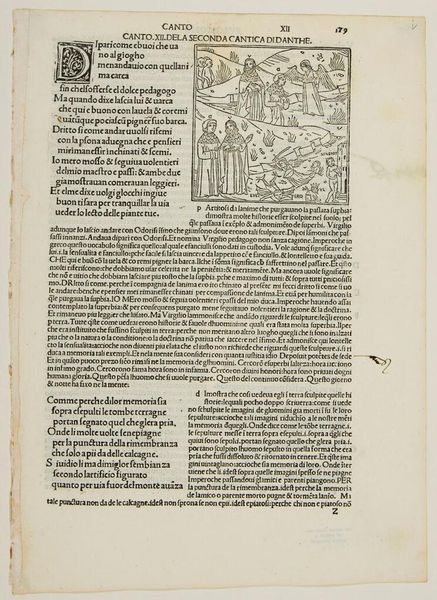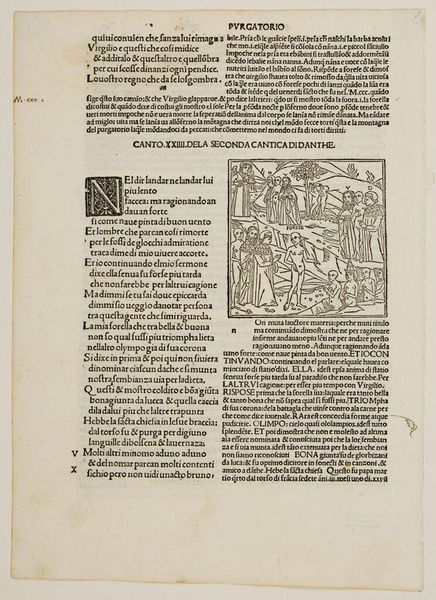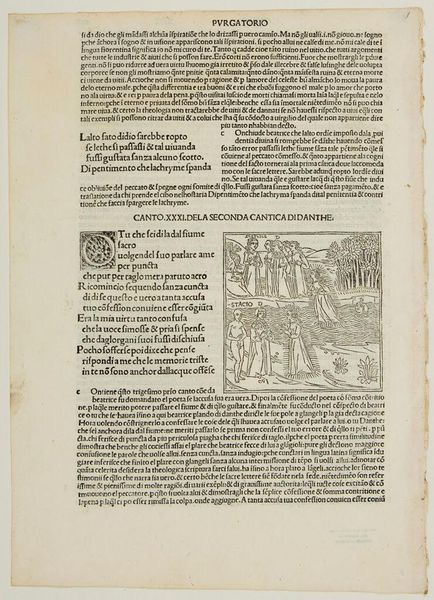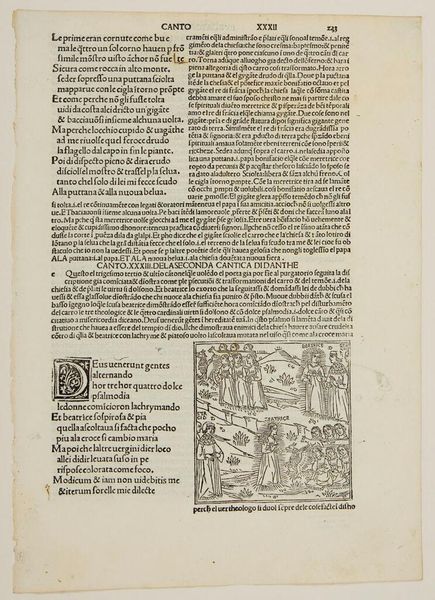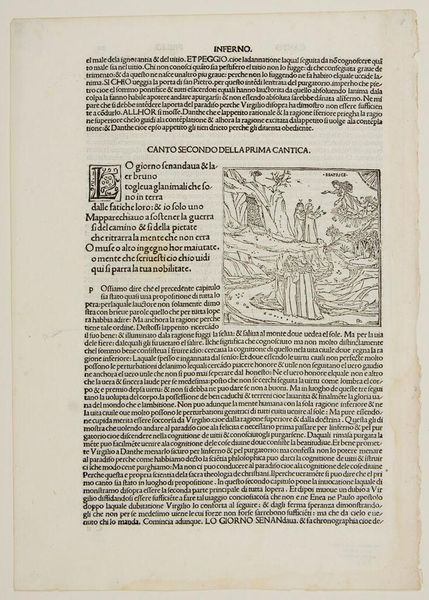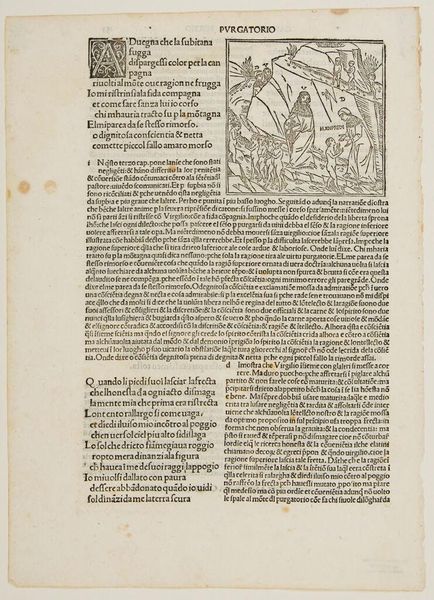
Canto XXX. The Earthly Paradise; Beatrice; Virgil Vanishes c. 15th century
0:00
0:00
Copyright: CC0 1.0
Curator: Let's examine this anonymous woodcut, titled "Canto XXX. The Earthly Paradise; Beatrice; Virgil Vanishes." Note the figures presented in a garden scene, apparently illustrating a key moment from Dante's *Purgatorio*. Editor: Visually, I'm struck by the stark contrast created by the woodcut technique. It feels almost dreamlike, enhancing the allegorical nature of Dante's work. Curator: Indeed. It is from an early printed edition of Dante's *Divine Comedy.* The image serves as a powerful visual aid. The composition guides the reader through Dante's encounter with Beatrice after Virgil's departure. It's crucial to remember that such images were often perceived as historical documents, further shaping the reception of Dante's text. Editor: I agree. The lines and their density create depth, drawing the eye through the different planes of action—from Virgil to Beatrice, ultimately towards the symbolic garden. Curator: The appearance of Beatrice, representing divine love and reason, is particularly significant. It signifies Dante's transition to a higher level of spiritual understanding. The narrative unfolds, highlighting the relationship between the individual and their spiritual journey. Editor: I see how the artist uses Beatrice as a focal point. The overall effect is quite compelling, successfully inviting a reader to look deeper into Dante's world. Curator: This image offers a glimpse into how Dante’s visions were interpreted and circulated, influencing our understanding of his work for centuries. Editor: It’s a reminder of the power of visual storytelling. Thank you.
Comments
No comments
Be the first to comment and join the conversation on the ultimate creative platform.
